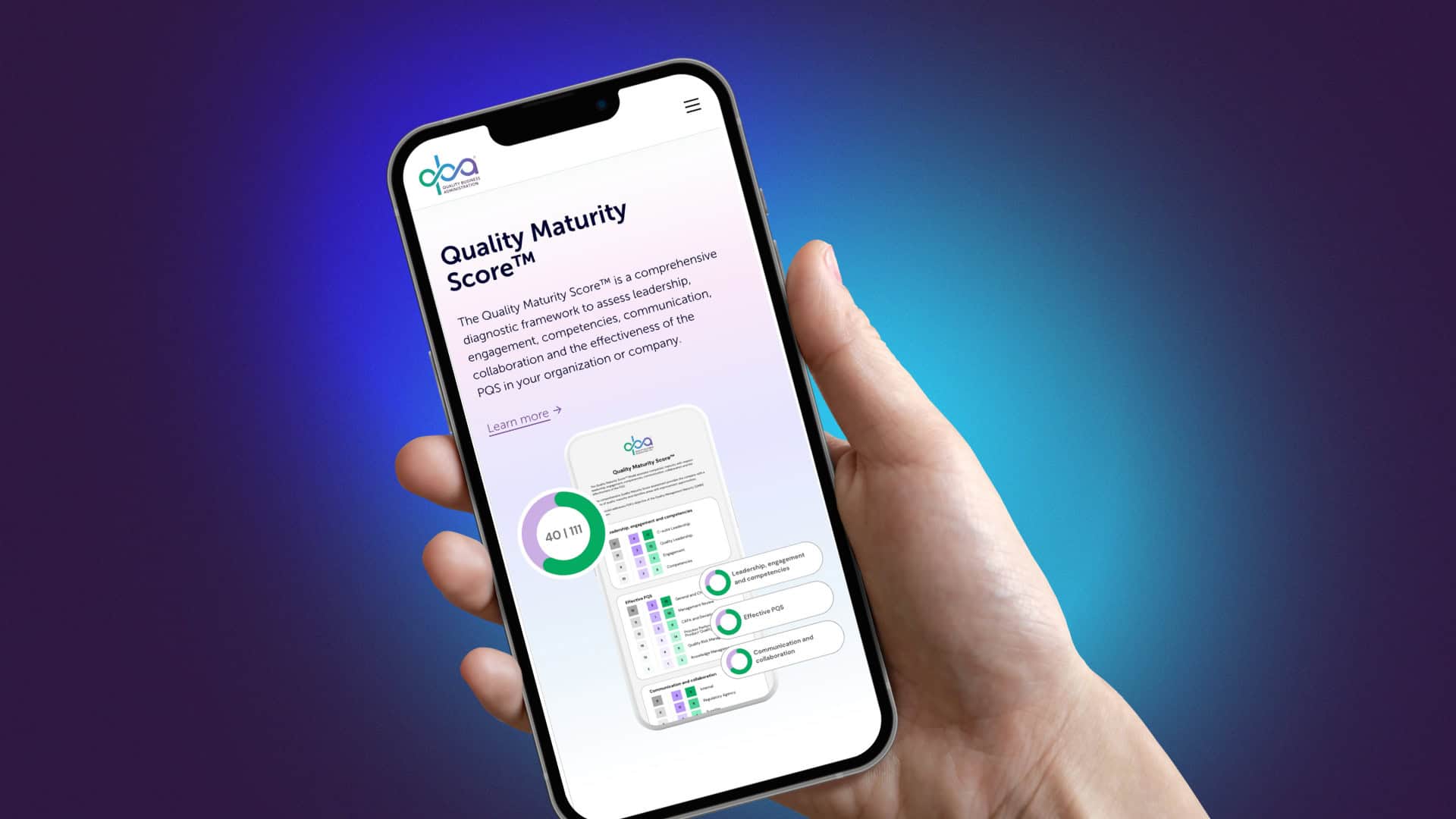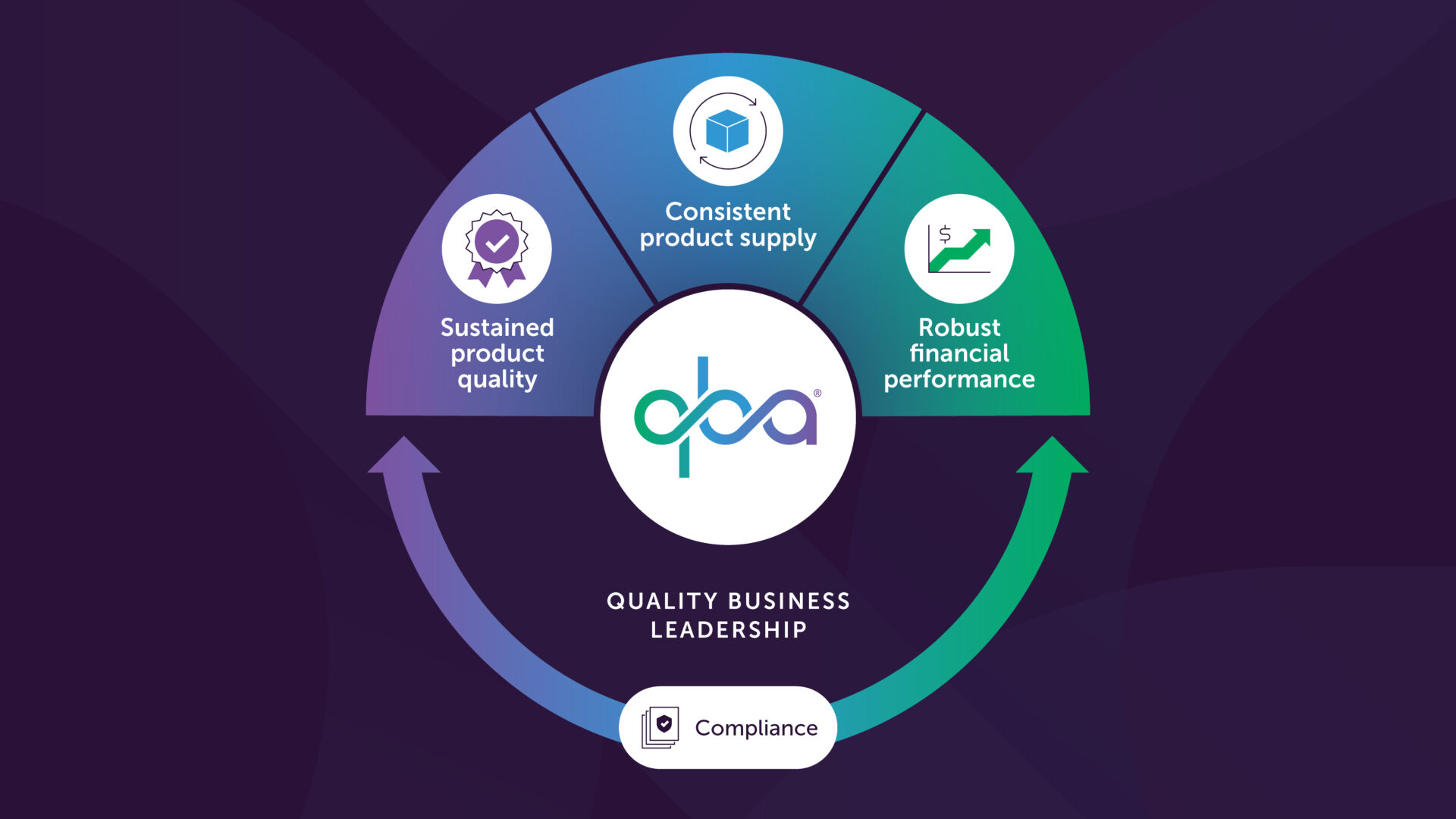Majority of Operational Excellence projects are not quality improvement focused
Prior to the Inaugural Quality Business Leadership Summit in Dublin May 2024 a survey with 16 quality maturity questions was sent out to all attendees. 50 responses (~50% response rate) were received from the attendees who are senior level pharmaceutical leaders from industry, academia, and regulatory agencies. The results are shown and discussed in this article. The 16 questions are part of a much larger Quality Maturity Score diagnostic tool developed and provided by Quality Business Administration.
The survey consisted of 4 quality maturity questions for each of 4 topics: Processes, Employees, Chief Executive Officer (CEO), Chief Quality Officer (CQO). Each question had 5 response opportunities: strongly agree, agree, disagree, strongly disagree, and not informed. The not informed category, we assume, was used if either the respondent was not aware of or did not work in the pharmaceutical industry, as most questions were industry related, so would not have been relevant to the regulatory or academic attendees of the summit). Results of all 16 questions are shared and discussed below. Responses to each question provides some insight to the collective maturity of quality management, in general.
Processes Questions
The most surprising response in our view was the answer to the question “The majority of OE projects are focused on quality improvements (rather than cost reduction)” to which the majority answered no (61% combined strongly disagree and disagree, see Figure 1 below). If the ‘not informed’ questions are excluded that number increases to 71%. Thus, the vast majority of OE projects are not quality improvement focused. One would assume that they are then mainly cost reduction focused. Deming once said, “improve quality and cost reduction will follow”. The opposite is not the case. Reducing cost as the primary objective unfortunately can have the consequence of also reducing quality. Responses to the survey suggest that Quality leaders can do better to get involved in and lead more OE projects that are quality improvement focused. This is also an area of opportunity to engage employees across the organization to own and improve quality.
The other three questions in the Processes group were related to CAPAs, lessons learned, and HR processes. The CAPA question was “CAPA timelines are not routinely extended”. From a quality maturity perspective extending CAPA timelines routinely can be an indication of inadequate resources or priority given to fixing identified issues and instead ‘kick the can down the road’. 43% indicated that they do routinely extend CAPA timelines. Excluding ‘not informed’ response the number is 47% or almost half of the respondents. This metric is worth paying attention to in your company to ensure that you continually and timely improve the quality system.
Lessons learned is a great way to collectively enhance knowledge of an organization and to not only share but also institutionalize the new knowledge by including it into the Quality System framework of documents and processes. Two thirds (65%, 71% excluding ‘not informed’ responses) of the respondents say that “there are effective lessons learned processes in place across the organization” (agree or strongly agree). That is good to note assuming that the processes are also actively used to implement the specific lessons learned in the Quality System.
There is a saying “what gets measured gets done”. Likewise, one can argue that “what get’s rewarded get’s the priority”. Thus, when “HR processes reward and recognize desired qualitybehaviors” it can be an indication that employees prioritize work that includes desired behaviors. One third (33%, 36% excluding ‘not informed’ responses) responded that their HR processes do not reward desired quality behaviors (disagree or strongly disagree).
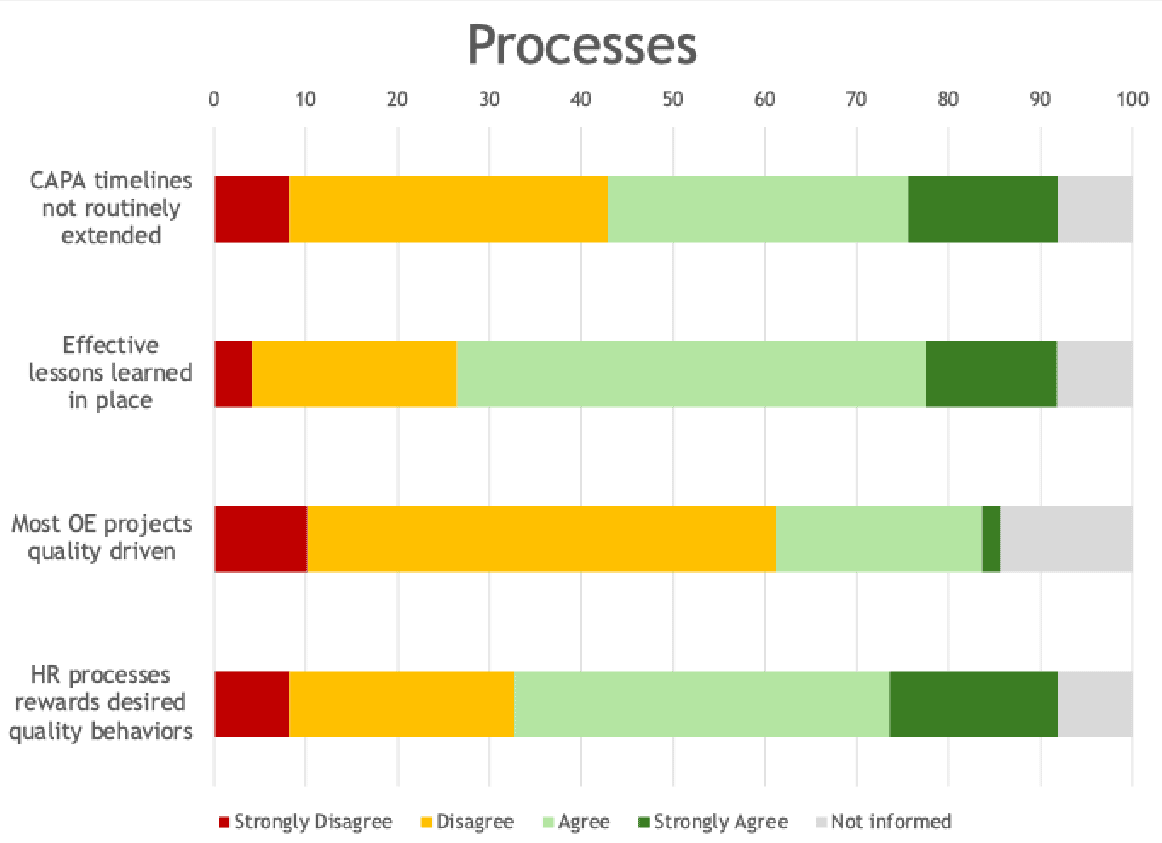
Employees Questions
When answering the question “Majority of employees participate in quality improvement projects on voluntary basis” approximately half (54 %, see Figure 2 below) responded agree or strongly agree (58% excluding ‘not informed’ responses. That might seem satisfactory, but it leaves almost half of the workforce not actively involved in quality improvement projects. For an organization to have a highly engaged workforce it is the authors view that at least 80% of all employees should be voluntarily (i.e. because the ‘want-to’ rather than ‘have-to’) involved in such projects. We also find that the metric ‘percentage employees involved in quality improvement projects’ is a good measure for overall engagement of the workforce.
Responses indicate that employees know what is expected of them and feel appreciated by Management with 90% and 86% responding agree or strongly agree, respectively. Both are important questions to ask in company surveys as they are good indicators of employee engagement.
Attrition rates differ from company to company and from area to area, but it is always an important area to focus on for senior management. The lower the attrition, the less knowledge the company loses, and it might also indicate that people are satisfied with working for the company.
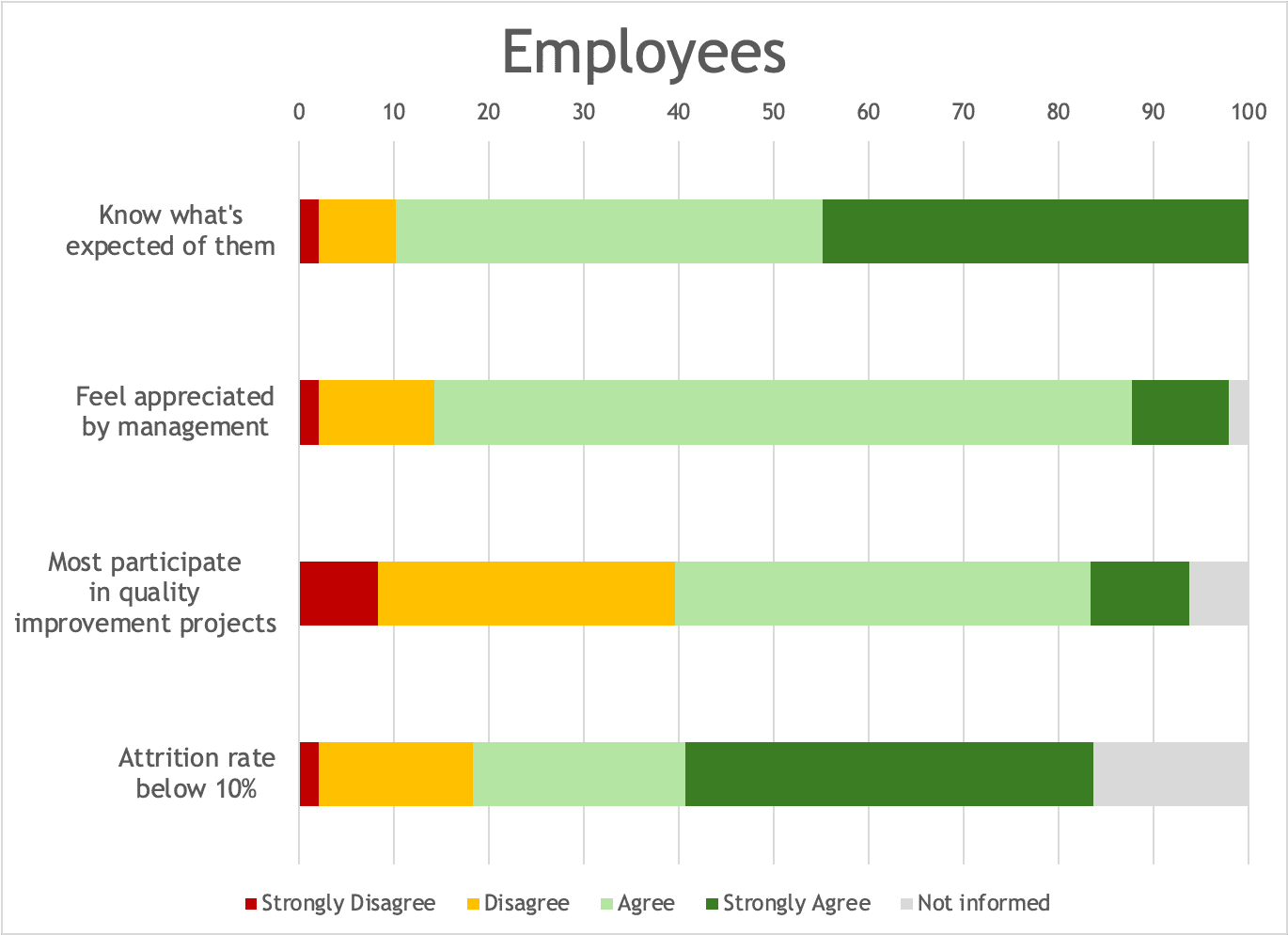
CEO Questions
For the CEO set of questions asked in the survey it is good to see a high positive response rate for the CQO being respected as decision-maker for quality and compliance related topics. (82% agree or strongly agree, 89% excluding ‘not informed’ responses, see Figure 3 below).
The other three questions show more variation in responses with improvement opportunities for some companies. Surprising to us is that 31% answered disagree or strongly disagree to “CEO regularly attends Management Review” (34 % excluding ‘not informed’ responses). One can speculate that the answer might change with more attending the Management Review if it the Site General Manager and not the CEO. The Management Review at the highest organizational level is an excellent opportunity for the CQO to bring up key trends and ensuring investment in areas for improvement. As such CQOs should strive for the CEO to attend regular Management Reviews.Ideally, the questions “The CEO frequently and visibly communicates and demonstrates the importance of cGMP compliance” and the “CEO endeavors to ensure everyone in the organization has goals that specifically relate to quality” should have a positive response percentage of 100%. However, only 70% and 69%, respectively, responded agree or strongly agree to these questions. For those companies that did not respond positively to these questions it can indicate a quality culture problem and/or a challenging role of the CQO to ensure the company moves beyond basic cGMP compliance.

CQO Questions
The last set of questions related to the CQO were all answered overall positively (agree or strongly agree) with percentages of 89%, 91%, 91%, and 85% excluding ‘not informed’ responses, see Figure 4. The questions were “The CQO Promotes quality to be the responsibility of all employees, not just those within the Quality function”, “The CQO Does not accept substandard compliance”, “The CQO Always makes risk-informed decisions that are science-driven and evidence-based”, and “The CQO Continuously endeavors to simplify the Quality System”. The responses were provided mostly by senior level Quality leaders. It would be interesting to ask the same questions to senior level Operations leaders and see if any significant different responses would be seen. All four questions represent things that any CQO should be doing as an important part of his/her job.
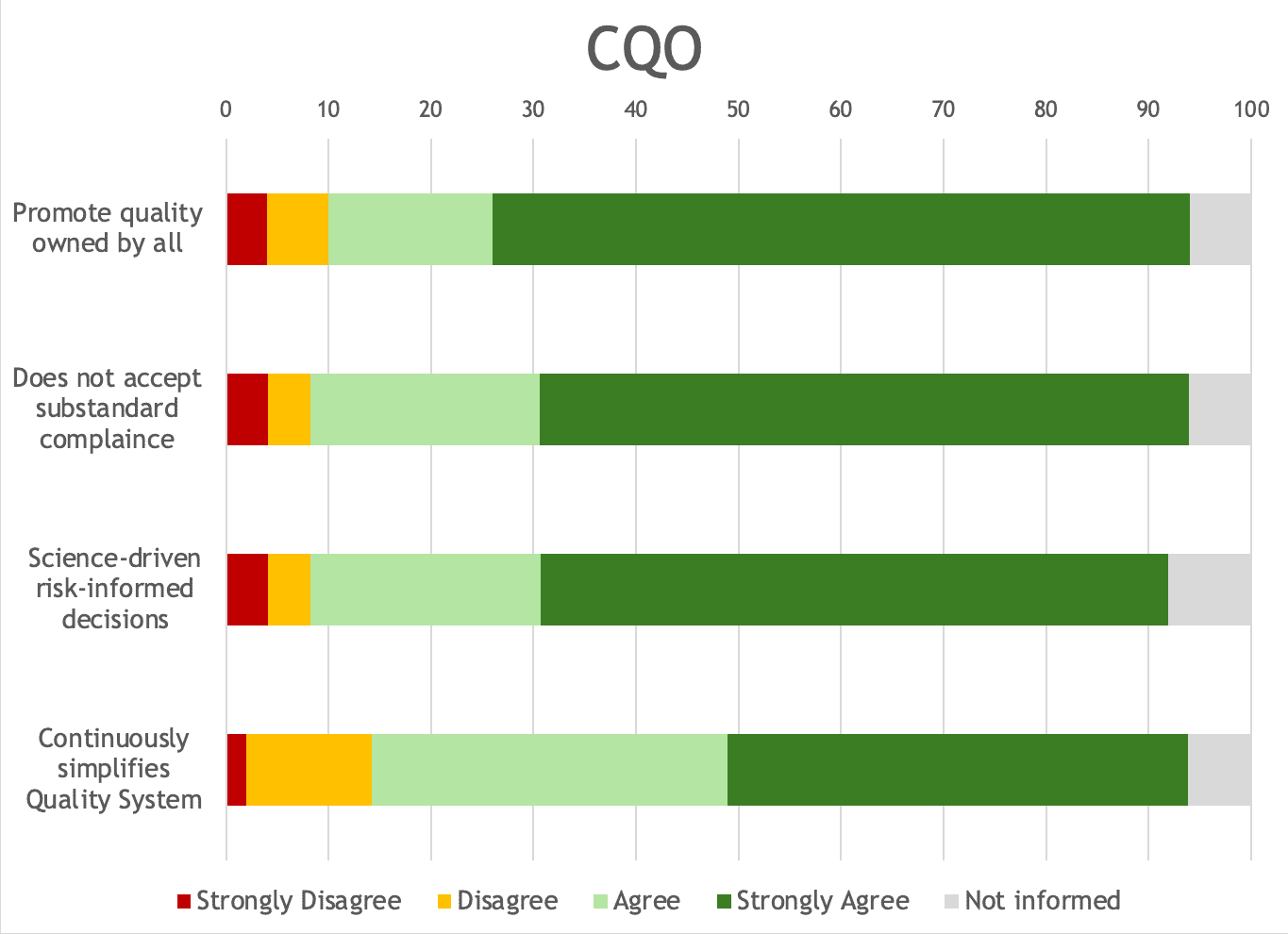
Conclusion
The responses to the 16 questions show some variation of quality maturity amongst the companies/persons participating. All the respondents were senior level leaders primarily in the industry, but the survey was also submitted to senior level academia and regulatory agency leaders. Biggest areas of improvement, based on the responses, are engaging more employees in quality improvement projects, shifting OE projects from cost to quality improvement focused, ensure more involvement of the CEO is key quality matters, and avoiding extending CAPA deadlines.
The 16 questions presented and discussed here are part of a much larger quality maturity score diagnostic tool with more than 150 questions in 14 areas related to the quality system, leadership, engagement, competencies, and communication.
Learn more about the Quality Maturity Score here or contact Anders Vinther at anders@qbaleaders.com.
